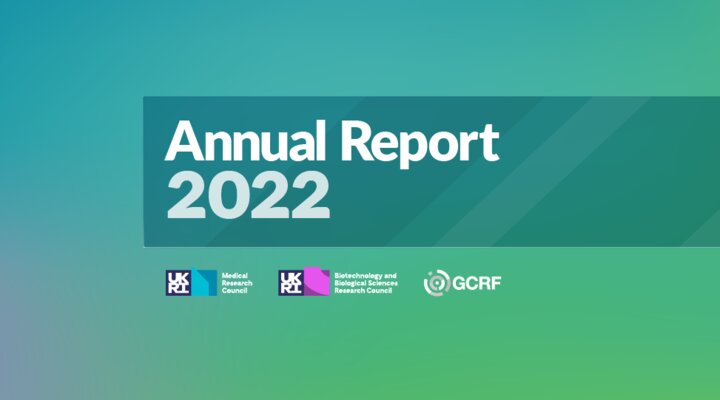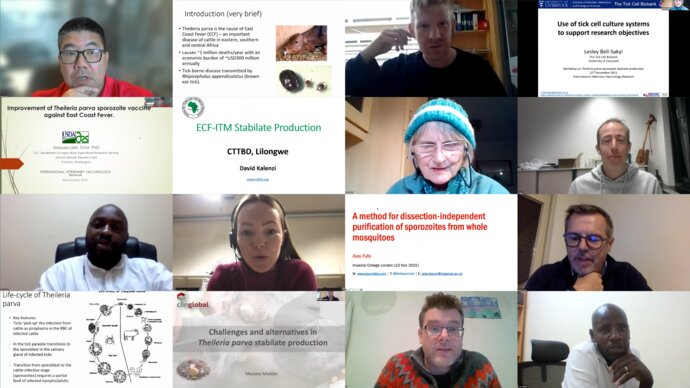Online workshop
Optimisation of the production of sporozoite stabilate for Theileria parva
The IVVN facilitated an online workshop that brought together groups interested in Theileria sporozoite production.
East Coast Fever (ECF) is an important disease of cattle in a large area of eastern, southern and central sub-Saharan Africa that is caused by the tick-borne apicomplexan parasite Theileria parva. At present the only vaccine commercially available for T. parva is the ‘infection-and-treatment method’ (ITM), in which animals are concurrently inoculated with T. parva sporozoites and treated with long-acting oxytetracycline.
Generation of T. parva sporozoites requires the use of the tick vector Rhipicephalus appendiculatus (brown ear tick of cattle) in a process that enables the tick to ‘pick-up’ T. parva piroplasms from the blood of infected cattle and then, during a subsequent partial feed, mature the parasite to the sporozoite stage. This process is long, complex, resource- and time-intensive and involves use of a significant amount of animals. There remain a number of key ‘bottlenecks’ and challenges in the production of T. parva sporozoites for ITM vaccination.
This workshop aimed to bring together groups actively involved in the industrial-scale production of T. parva sporozoites, groups researching methods that could be used to improve sporozoite production and others interested in this area of work to:
- Share information on ongoing research projects.
- Identify what are the most important obstacles to optimising sporozoite production.
- Explore how groups can collaborate to most effectively address these challenges.
There were 38 attendees at the workshop. Notably, in addition to delegates from areas where ECF is an endemic disease, there were several attendees from other parts of Africa and Asia where the topics discussed are of potential relevance to related parasites, such as Theileria annulata.
Also attending the meeting were delegates who have a primary interest in malaria. In keeping with some of the work being presented, this reflected the interest in translational knowledge between groups working with human and veterinary pathogens.

